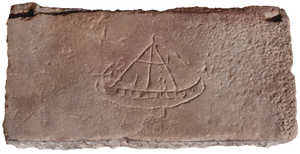Development of basque shipbuilding typology in deep-water vessels
Following the fall of the Western Empire, its entire area of influence went into deep decline. Nonetheless, archaeological evidence shows that shipping routes in the Atlantic as far as Britannia were kept up until at least the seventh century; however we have no indication of what the ships plying these routes might have looked like. With the foundation of new coastal towns around the twelfth century, ships began to be used as marks of identity on crests and coats of arms. From that point on, naval iconography developed, giving us important information on the general appearance of the ships in each era. From them we can create a rudimentary overview of the development of Basque ships.

Frigates. These ships had characteristics which were to notably
improve sailing, with enhanced manoeuvrability and speed. © José Lopez

The greatest technological advance of the eighteenth century
came with the development of the ship-of-the-line, as science was
applied to shipbuilding. Basque shipbuilders took an active part in
developing the ship-of-the-line. Model warship. Several of these
were built in Pasaia and Orio, following instructions from Gaztañeta,
between 1713 and 1716. © José Lopez

Ship from the late fifteenth century depicted in the ex-voto at
the church in Zumaia. The evolution in the rig of the ships is clear,
with new multi-masted vessels. © José Lopez

This sequence of outlines depicts the evolution of Basque deepwater
vessels, with one representative from each century. © José Lopez










